Beachgoers at a beautiful New Jersey beach will now have to make do with the sand after the city banned swimming in the water for the rest of the summer.
Officials at the Jersey Shore resort of Beachwood announced the devastating news after high levels of bacteria were found in the water.
The decision was made based on reports from the Ocean County Health Department, which indicated that the excessive bacteria levels could pose a risk to public health and safety.
The mayor and council explained in a statement on the municipality’s website that the closure is necessary “for the safety, health and well-being of residents and others.”
Despite the water being closed to swimmers, visitors are still welcome to enjoy the sand and beautiful views of the beach – but swimming is not permitted
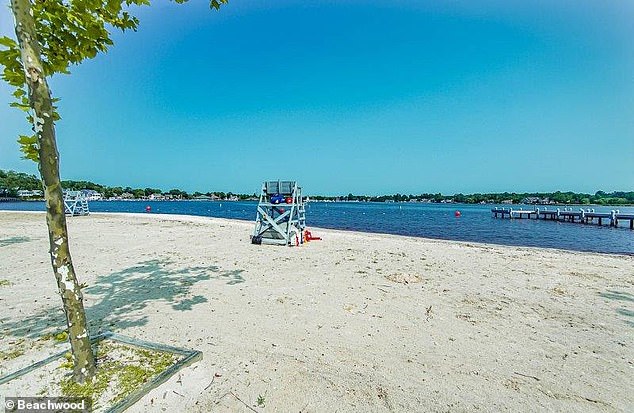
The beach in Beachwood, New Jersey on the Jersey Shore, pictured, will be closed to swimming for the rest of the summer after high levels of bacteria were found in the water
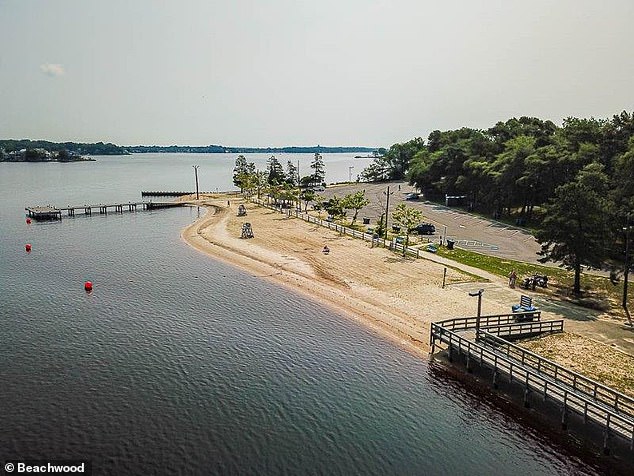

Reports from the Ocean County Health Department, which indicated that the excessive bacteria levels could pose a risk to public health and safety. Above, Beachwood Beach in New Jersey
“For the safety, health and well-being of our residents and others, the Mayor and Council have decided to close swimming at the beach for the remainder of the 2024 season due to the Ocean County Health Department reporting that the water has been found to have elevated levels of bacteria,” the full announcement reads.
“You can still sit and enjoy the beautiful view of the landscape, but swimming is not allowed,” the statement said.
New Jersey Department of Environmental Protection guidelines dictate how water quality standards for bathing beaches are determined by the concentration of enterococci bacteria, a microbe commonly found in human and animal feces.
According to the U.S. Environmental Protection Agency, it can lead to illnesses, including gastrointestinal upset, and can cause infections in the ears, nose and throat.
If the concentration in two consecutive samples exceeds 104 colonies per 100 milliliters, the beach must be closed.
The measure ensures that pollutants entering bathing water do not pose a health risk to the population.
The beach is not on the Atlantic Ocean, but slightly inland on the Toms River, which flows into Barnegat Bay.
Dan Regenye, Ocean County Public Health Coordinator/Health Officer, said the amount of fecal bacteria on the beach has always been a problem.
“In the 30 years that I’ve been here, it’s always historically come back with some issues in terms of some of the high numbers. I know historically we’ve worked a lot with the city and with the county engineer from the DEP to look at the potential source,” Regenye said. New Jersey 101.5.
Regenye thinks the location along Route 9 is part of the problem.
“It sounds like a little inlet where it’s not flushing properly, causing stuff to get stuck, which I think is making the problem worse,” Regenye said. “It’s just recirculating and not being able to dilute as quickly.
“Obviously we want to open this as quickly as possible and make it safe,” Regyne said.
This is the second year in a row that swimming has been prohibited at Beachwood Beach.
Last year, swimming was again banned because local authorities were unable to hire lifeguards after only one application was received.
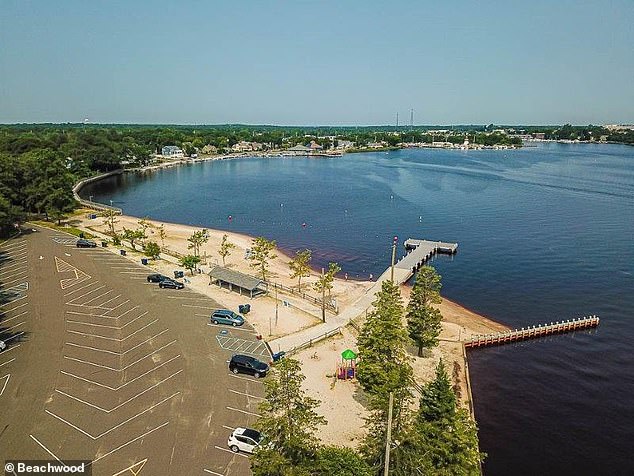

Beachwood officials have assured that those who purchased seasonal beach permits will be reimbursed in due time. Above, Beachwood Beach in New Jersey
Beachwood authorities have assured that those who purchased a beach permit will receive their money back in due course.
A report earlier this month found that more than half of US beaches contain potentially dangerous levels of feces.
Tests conducted at more than 3,000 beaches along the country’s coastline showed that 55 percent of beaches had unsafe levels of sewage in their waters for at least one day last year. One in nine beaches had persistently unsafe levels last year.
According to experts, about one in thirty people who swim in sewage water are at risk of becoming ill. This can happen through swallowing water, which can lead to stomach problems, diarrhea, abdominal cramps and vomiting, or through infections.
The southern Gulf Coast states, including Florida, Texas and Louisiana, were hit hardest, with 84 percent of beaches experiencing at least one day of fecal contamination in 2022.
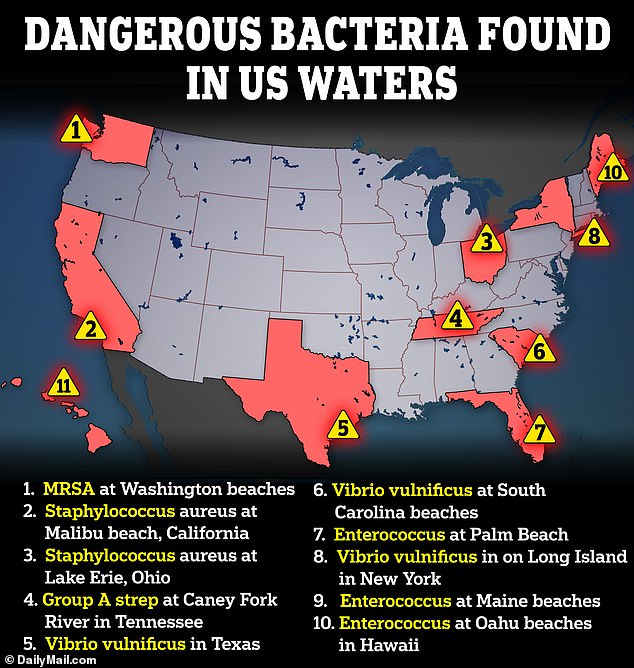

Dangerous bacteria that can eat away at meat are found on beaches and vacations across the country. Above are some examples of where they have been found.
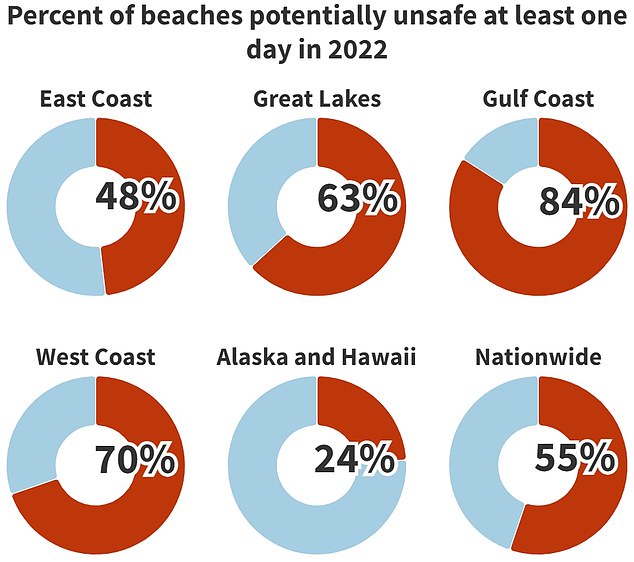

The above divides the U.S. coastline into regions. It shows that the Gulf Coast was hit the hardest, with 84 percent of beaches unsafe for swimming at least once last year, followed by the West Coast and the Great Lakes region.
According to the United States Lifesaving Association, Americans make 400 million visits to the beach each year.
But there have been concerns about water quality for years.
Colorado-based advocacy group Environment America collected the data as part of its annual report, “Safe for Swimming?”
Feces can be washed into the sea after storms, with rainwater causing drains and sewage systems to overflow and leak their contents. It can also enter the sea via rivers that collect manure from industrial farms.
The latest report is based on figures from the National Water Quality Monitoring Council, part of the Environmental Protection Agency (EPA), which maps water quality at beaches in the United States.
A total of 3,192 beaches were included in the report. On average, states test the water at their beaches for sewage contamination about once a week.



